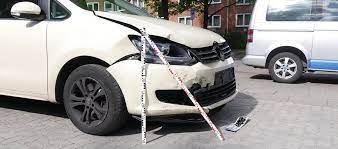Car damage assessment is a crucial process that helps determine the extent of damage to a vehicle after an accident or incident. It involves a detailed inspection of the vehicle kfz gutachter kaltenkirchen to identify and document any visible or hidden damages. This assessment is essential for insurance claims, repair estimates, and ensuring the safety and functionality of the vehicle. In this article, we will explore the key aspects of car damage assessment, including its importance, the process involved, and the tools used.
Importance of Car Damage Assessment
Car damage assessment is vital for several reasons:
- Insurance Claims: Insurance companies require a detailed assessment of the damage to process claims accurately. This helps in determining the cost of repairs or replacement of the vehicle.
- Safety: Assessing the damage helps identify any structural or mechanical issues that may compromise the safety of the vehicle. Repairing these issues is crucial for the safety of the driver and passengers.
- Resale Value: A documented assessment of the damage can affect the resale value of the vehicle. Buyers often request a history of damages and repairs before making a purchase.
- Legal Requirements: In some jurisdictions, a formal assessment of damages is required by law for insurance purposes and to establish liability.
The Process of Car Damage Assessment
The process of car damage assessment typically involves the following steps:
- Initial Inspection: The assessor visually inspects the vehicle to identify any visible damages, such as dents, scratches, or broken parts. They also check for signs of structural damage.
- Documentation: The assessor documents the damages using photographs, videos, and written descriptions. This documentation is used to prepare repair estimates and insurance claims.
- Detailed Inspection: A more detailed inspection is conducted to assess the extent of the damage. This may involve disassembling parts of the vehicle to inspect for hidden damages.
- Estimation: Based on the inspection findings, the assessor prepares a detailed repair estimate. This estimate includes the cost of parts, labor, and any additional repairs required.
- Report Preparation: A formal report is prepared, detailing the assessment findings, repair estimates, and recommended repairs. This report is submitted to the insurance company or the vehicle owner.
Tools Used in Car Damage Assessment
Car damage assessors use a variety of tools to assess damages accurately:
- Paint Depth Gauge: Used to measure the thickness of paint on the vehicle’s surface, which can indicate if the vehicle has been repainted or if there is hidden damage.
- Dent Detection Light: A bright light used to highlight dents and imperfections in the vehicle’s bodywork, making them easier to identify.
- Computerized Estimating Systems: Software that helps assessors create detailed repair estimates based on the vehicle’s make, model, and damage.
- Diagnostic Tools: Used to identify any electronic or mechanical issues in the vehicle that may have been caused by the damage.
Conclusion
Car damage assessment is a crucial process that helps determine the extent of damage to a vehicle and plays a significant role in insurance claims and vehicle safety. By understanding the importance of car damage assessment, the process involved, and the tools used, vehicle owners can ensure that their vehicles are repaired correctly and maintain their value over time.




